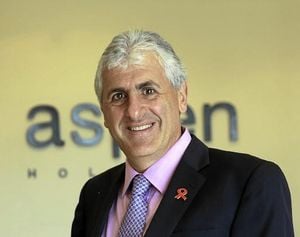On April 15, 2025, Ontario Premier Doug Ford and Federal Industry Minister Anita Anand strongly refuted a report from the Japanese news outlet Nikkei, which suggested that Honda was considering relocating some of its automotive production from Canada to the United States. This speculation arose following the imposition of 25 percent tariffs on imported vehicles by the U.S. government in early April, a move that has significantly increased costs for automakers.
The Nikkei report claimed that Honda was planning to shift enough production of its popular CR-V and Civic models to the U.S. to ensure that 90 percent of its U.S. sales would be fulfilled by vehicles manufactured domestically, up from the current level of around 70 percent. However, both Anand and Ford emphasized that no such decisions have been made.
In a social media post, Minister Anand stated, "Honda has communicated that no such production decisions affecting Canadian operations have been made, and are not being considered at this time." She also mentioned that she would meet with the CEO of Honda Canada later that day to discuss the company's plans further.
During a press conference at Queen's Park, Premier Ford echoed these sentiments, categorically denying the accuracy of the Nikkei report. He revealed that he had spoken directly with Dave Jamieson, President of Honda Canada, who confirmed that the company is currently operating at full capacity and is indeed interested in increasing production in the U.S., but not at the expense of its Canadian operations. "We’re gonna keep Honda here," Ford asserted, emphasizing his commitment to protecting jobs and businesses in Ontario.
Honda's manufacturing facility in Alliston, Ontario, employs approximately 4,200 workers and produced around 375,000 vehicles in 2023. The company has a significant presence in Canada and recently announced a $15 billion investment aimed at developing electric vehicle production capabilities in the country. This investment includes plans to construct an electric vehicle battery plant adjacent to its existing Alliston facility.
Despite the optimistic outlook from Ford and Anand, the Nikkei report suggested that Honda might increase its U.S. production by 30 percent over the next two to three years, which could potentially lead to a reduction in Canadian production levels. If true, this would pose a serious challenge to the Ontario automotive sector, which has relied heavily on Honda's operations.
Last year, nearly 40 percent of Honda's global sales were generated in the U.S., making it the automaker's largest market. Approximately 1.4 million vehicles were sold in the U.S., with about 40 percent of these imports coming from Canada or Mexico. The potential shift in production could therefore have significant implications not only for Honda's Canadian workforce but also for the broader automotive supply chain in the region.
In light of the tariffs, Honda Canada spokesperson Ken Chiu previously stated that the company is working to understand the impacts of these new measures and is committed to taking a "measured, thoughtful approach" to ensure continued success in Canada.
On April 14, 2025, U.S. President Donald Trump suggested that he might temporarily exempt the automotive industry from the tariffs he had imposed, allowing car manufacturers time to adjust their supply chains. This announcement came as a relief to many in the industry, who are grappling with the uncertainty surrounding the tariffs and their potential long-term effects.
The Canadian federal government is also taking steps to support businesses affected by U.S. tariffs. On April 15, 2025, new financial assistance measures were announced to encourage automakers to maintain production in Canada, a move that aligns with the government's commitment to preserving jobs and fostering economic growth.
Industry experts have weighed in on the situation, noting that while the Nikkei report raises valid concerns, it may also be based on preliminary contingency planning rather than definitive production strategies. Flavio Volpe, President of the Automotive Parts Manufacturers' Association, remarked that the Honda news might be rooted in a broader context of uncertainty among automakers as they navigate the evolving landscape of tariffs and trade policies.
Greg Layson, digital and online editor for Automotive News Canada, echoed this sentiment, suggesting that many automakers are preparing for worst-case scenarios as they anticipate the possibility of permanent tariffs. However, he cautioned that any significant changes to production locations would likely take years to implement and involve considerable financial investment.
As the automotive industry continues to adapt to the shifting regulatory and economic landscape, the situation surrounding Honda's production plans remains fluid. Both the Ontario government and federal authorities are committed to engaging with Honda and other automakers to ensure that Canadian interests are prioritized as they navigate these challenges.
With the potential for significant impacts on jobs and the local economy, the coming weeks and months will be critical for Honda's operations in Canada and the broader automotive sector. Stakeholders are closely monitoring developments, hoping for a resolution that supports Canadian manufacturing while addressing the realities posed by U.S. tariffs.







